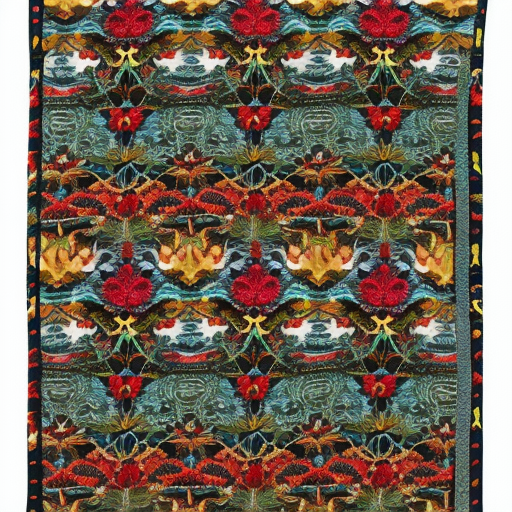Summary: Prints and patterns are an integral part of art and design, adding visual interest and character to various mediums. They can be found in a wide range of art forms, including textiles, ceramics, and graphic design. Prints and patterns can be created through various techniques, such as screen printing, block printing, and digital printing. They can be inspired by nature, culture, or abstract concepts, and are often used to convey a specific mood or message. In fashion, prints and patterns play a crucial role in defining trends and personal style, allowing individuals to express their creativity and individuality.
Introduction
Prints and patterns are visual representations that add depth, texture, and interest to various art forms. They can be found in textiles, ceramics, wallpaper, and graphic design, among others. Prints and patterns are created through various techniques, each with its own unique characteristics and effects.
Techniques for Creating Prints and Patterns
There are several techniques for creating prints and patterns. One of the most common is screen printing, which involves transferring ink through a mesh screen onto a surface. This technique allows for precise and detailed designs, making it popular in the textile industry.
Block printing is another technique that involves carving a design onto a block of wood or linoleum and then transferring the design onto a surface by applying ink to the block and pressing it onto the material. This technique is often used in traditional textile printing and can create bold and repetitive patterns.
Digital printing has become increasingly popular in recent years, allowing for intricate and detailed designs to be printed directly onto various surfaces. This technique offers endless possibilities for experimentation and customization.
Inspiration for Prints and Patterns
Prints and patterns can be inspired by a wide range of sources. Nature is a common inspiration, with floral, animal, and landscape motifs frequently used in prints and patterns. Cultural influences, such as traditional textiles and indigenous art, also play a significant role in inspiring prints and patterns.
Abstract concepts, such as emotions or geometric shapes, can also serve as inspiration for prints and patterns. These designs often aim to convey a specific mood or message, adding depth and meaning to the artwork.
Role of Prints and Patterns in Fashion
In the world of fashion, prints and patterns are essential in defining trends and personal style. They allow individuals to express their creativity and individuality through their clothing choices. Prints and patterns can transform a simple garment into a statement piece, adding visual interest and character.
Designers often use prints and patterns strategically to create a specific aesthetic or evoke a certain mood. Bold and vibrant prints can make a statement, while subtle and delicate patterns can add a touch of elegance. Prints and patterns can also be used to create visual illusions, such as slimming or elongating the body.
Conclusion
Prints and patterns are a vital aspect of art and design, adding visual interest and character to various mediums. They can be created through techniques such as screen printing, block printing, and digital printing. Prints and patterns can be inspired by nature, culture, or abstract concepts, and are often used to convey a specific mood or message. In fashion, prints and patterns play a crucial role in defining trends and personal style, allowing individuals to express their creativity and individuality. Whether it’s a vibrant floral print on a dress or an intricate geometric pattern on a ceramic vase, prints and patterns have the power to transform ordinary objects into works of art.












